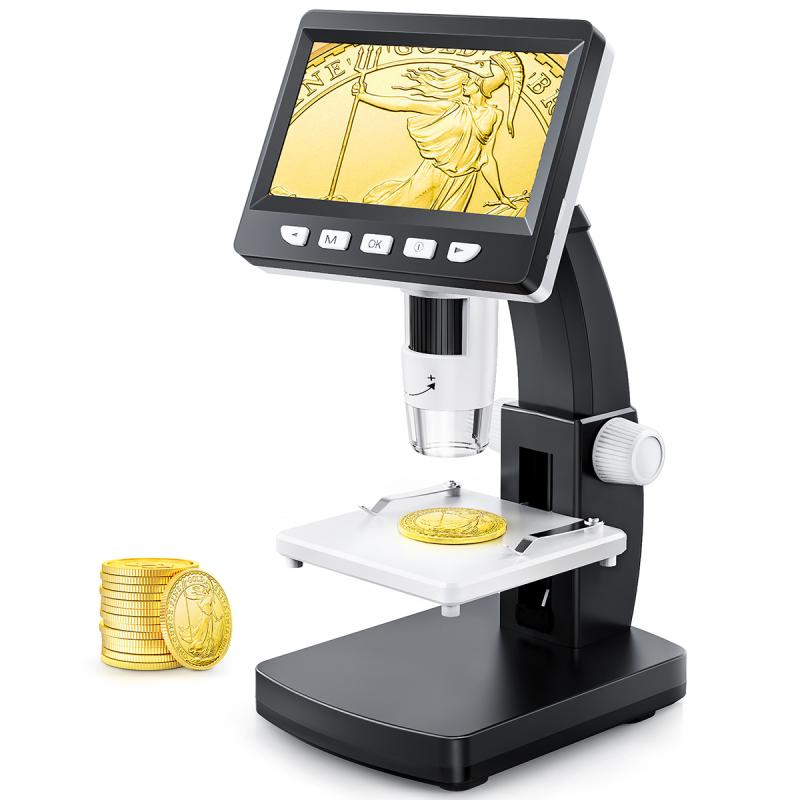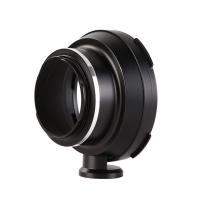How To Calculate Total Magnification Of A Microscope ?
The total magnification of a microscope is calculated by multiplying the magnification of the objective lens by the magnification of the eyepiece. For example, if the objective lens has a magnification of 10x and the eyepiece has a magnification of 20x, the total magnification would be 200x (10 x 20 = 200). It is important to note that the magnification of the objective lens is usually printed on the lens itself, while the magnification of the eyepiece is often labeled on the microscope body or in the user manual. Additionally, some microscopes may have multiple objective lenses with different magnifications, so it is important to use the correct magnification when calculating the total magnification.
1、 Understanding Microscope Magnification
How to calculate total magnification of a microscope:
To calculate the total magnification of a microscope, you need to multiply the magnification of the objective lens by the magnification of the eyepiece. The objective lens is the lens closest to the specimen, and the eyepiece is the lens closest to your eye.
For example, if the objective lens has a magnification of 10x and the eyepiece has a magnification of 20x, the total magnification would be 200x (10 x 20 = 200).
It is important to note that the total magnification is not the only factor that determines the quality of the image. Other factors such as resolution, contrast, and depth of field also play a role in the clarity and detail of the image.
Understanding Microscope Magnification:
Microscope magnification refers to the degree to which an object is enlarged when viewed through a microscope. Magnification is an important aspect of microscopy as it allows us to see objects that are too small to be seen with the naked eye.
There are two types of magnification in a microscope: objective lens magnification and eyepiece magnification. The objective lens is responsible for magnifying the specimen, while the eyepiece magnifies the image produced by the objective lens.
The total magnification of a microscope is the product of the objective lens magnification and the eyepiece magnification. The total magnification determines the level of detail that can be seen in the specimen.
In recent years, advancements in technology have led to the development of new types of microscopes with higher magnification capabilities. For example, electron microscopes use beams of electrons to magnify objects, allowing for much higher magnification than traditional light microscopes. These advancements have opened up new possibilities for scientific research and discovery.

2、 Calculating Total Magnification
Total magnification is a crucial aspect of microscopy, as it determines the level of detail and clarity of the image produced. To calculate the total magnification of a microscope, you need to multiply the magnification of the objective lens by the magnification of the eyepiece.
The objective lens is the lens closest to the specimen, and its magnification is usually indicated on the lens itself. The eyepiece, on the other hand, is the lens that you look through, and its magnification is usually indicated on the side of the eyepiece.
For example, if the objective lens has a magnification of 40x and the eyepiece has a magnification of 10x, the total magnification would be 400x (40 x 10 = 400).
It is important to note that the total magnification is not the only factor that determines the quality of the image produced. Other factors such as the quality of the lenses, the lighting conditions, and the specimen preparation also play a significant role.
In recent years, advancements in technology have led to the development of digital microscopes, which use digital cameras to capture images of the specimen. These microscopes often have software that allows for image processing and analysis, which can provide additional information about the specimen.
Overall, calculating the total magnification of a microscope is a simple process that is essential for producing high-quality images. However, it is important to consider other factors that can affect the quality of the image produced.

3、 Determining Eyepiece and Objective Lens Power
How to calculate total magnification of a microscope is a fundamental question for anyone using a microscope. The total magnification of a microscope is the product of the magnification of the eyepiece and the objective lens. The eyepiece magnification is usually 10x, while the objective lens magnification can vary from 4x to 100x or more, depending on the type of objective lens used.
To determine the total magnification of a microscope, you need to know the magnification of the eyepiece and the objective lens. Once you have this information, you can simply multiply the two magnifications together to get the total magnification.
For example, if you are using a microscope with a 10x eyepiece and a 40x objective lens, the total magnification would be 10 x 40 = 400x. This means that the image you see through the microscope will be 400 times larger than the actual size of the object.
It is important to note that the total magnification of a microscope is not the only factor that determines the quality of the image. Other factors, such as the resolution of the microscope, the quality of the lenses, and the lighting conditions, can also affect the clarity and detail of the image.
In recent years, advances in technology have led to the development of digital microscopes, which use digital cameras to capture images of the specimen. These microscopes often have built-in software that can calculate the total magnification automatically, making it easier for users to obtain accurate magnification measurements.

4、 Multiplying Eyepiece and Objective Lens Magnification
To calculate the total magnification of a microscope, you need to multiply the magnification of the eyepiece by the magnification of the objective lens. The eyepiece typically has a magnification of 10x, while the objective lens can range from 4x to 100x or more, depending on the type of lens being used.
For example, if you are using a microscope with a 10x eyepiece and a 40x objective lens, the total magnification would be 10 x 40 = 400x. This means that the image you are viewing through the microscope is magnified 400 times larger than its actual size.
It is important to note that the total magnification of a microscope is limited by the resolving power of the lens. This means that at a certain point, increasing the magnification will not result in a clearer or more detailed image. In fact, increasing the magnification beyond the resolving power of the lens can actually make the image appear blurry or distorted.
In recent years, there has been a growing trend towards using digital microscopes, which use a camera to capture images and display them on a computer screen. These microscopes often have software that allows you to zoom in and out on the image, effectively changing the magnification. While the principles of magnification still apply, the process of calculating total magnification may be different for digital microscopes.









































